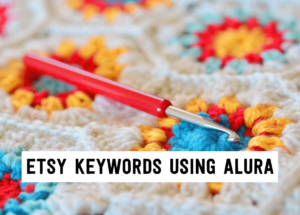
How to find the best Etsy keywords in 3 simple steps using Alura
If you want to be found in search results on Etsy, you need to optimize your product listing for SEO. And if you want to
join
join
If you’re reading this article today, you’re probably thinking about using paid ads to grow your handmade shop!
Perhaps you have a little bit of money to invest, and if your ads could generate sales it’s clearly very tempting.
But there are SO so many options these days it might feel a bit overwhelming: Pinterest ads, Instagram ads, Facebook ads, Etsy ads, Google ads – how do you know if they will help, and which one to choose?
Because using paid ads isn’t as easy as just throwing money to those platforms and then they’ll give you customers. . . it’s a little bit more strategic than that.
So in this article we are going to cover exactly what you need to know when considering paid ads for your shop, including:
So, ready? Let’s dive in.
There are a lot of ways that paid ads can help you grow your business, and it’s important that you know how they can help before evaluating if you are ready to use them for your handmade shop.
Let’s talk about 7 very important benefits of paid ads that can make them a great strategy for your handmade shop.

FREE WORKBOOKS, CHEAT SHEETS, AND RESOURCES TO HELP YOU START, GROW AND PROFIT FROM YOUR HANDMADE BUSINESS.
The first point I want to make is that time is money. You already know that there is A LOT to do when you are growing a business, not to mention you probably are very busy anyway with your life in general. . .
. . . and so ads are a good way to spend money instead of spending time, essentially. And that’s why a lot of people love them.
The second point is that ads are much faster than organic strategies, which makes them a great marketing booster when you want faster results.
It will cost you a bit more obviously than organic strategies – which are free – but you can get results much faster as well.
Our third point is that ads are a great way to complement organic strategies.
Having an advertising strategy doesn’t mean that you should do just paid ads, you can also have a good organic strategy. For example, say you’re on Instagram and you’re posting regularly and getting good engagement, then Instagram ads are an opportunity to boost what’s working.
So when you see that something has worked really well for you on a certain platform, you then know that if you were to put money behind it – that post or that reel or whatever has worked well organically – it’s likely to get you even more results.
So ads can be a great way to complement what you are doing organically.
A fourth advantage of ads is that it is easy to track the return of your efforts.
When you run an ad, you can easily track your numbers and see if you’re making a return or not, which is something that we don’t necessarily track when we spend time on Facebook or Pinterest or Instagram— on the free strategies and the organic strategies.
While we should track results on our free or organic strategies, it can be quite hard to do it and narrow down what worked and what didn’t.
But paid advertising makes it easy to track results, and see very clearly how much you put in and what you got out of that ad investment, which you can use to make your ad campaigns more effective.
Another advantage ads provide is they can free you up to do other things.
I think a good way to look at it is to imagine you’re hiring someone to work part time on your marketing, And some months this worker is not going to perform really well, but other months they’re going to kill it and make a ton of sales!
And if you’re really busy right now and you are struggling with your marketing – and you’re thinking “I would love to invest a little bit in ads to see if that means I can do less organic marketing and instead work on actually shipping my products,” – then ads are a great option to consider.
And so maybe you pay 300 bucks a month for ads and let the ads go to work for you while you work on other things.
Now that doesn’t mean that you don’t have to monitor your ads and that ads are work-free. Just think of it like a worker, you’re still going to be managing that worker and making sure they’re doing the right thing, but that worker will free up a lot of your time!
The next reason that ads can be a great strategy is that they can be scalable when you know what works, because as you get good at it, you can start scaling that success.
What that means is once you see results and feel confidence that a campaign works well, you can spend more on it to further increase the results.
Let’s say you are advertising on Instagram because historically you have a lot of click throughs from that platform. After you run different ads for a few months, you have one or two ads that do really well.
Now you can scale up and run those successful ads at a higher rate, because you know they work. So you can put more of your ad money behind those proven ads and boost your results.
And finally, ads are a great way to grow your shop because they help you get in front of the right people at the right time!
For example, you can use ads to easily reach people at the right time of their purchasing journey with you – this is a little bit more advanced but can be a really smart way to spend advertising dollars.
For example, let’s say you sell planners. With paid ads you can decide to show an ad to someone that purchased one of your planners three months ago. And you can decide to show an ad to them at just the time when they probably need a refill. And so it’s a good way to stay top of mind at the time where they probably are the most likely to reorder from you.
Or you can retarget, which means show your ads to people who already know you and trust you and have interacted with you – so that you already have that trust foundation. And it’s actually an easier sell to those people than trying to constantly get people that don’t know you at all to buy your products.
So ads let you do things that can really help you get in front of the right people at the right time because you’re in control of that a lot more with your ads than with organic algorithms, and you can scale up as you find which ads and which strategies worked best.
Now that we’ve talked about all the ways paid ads can help you increase sales and attract new customers, let’s talk about how to evaluate if you should use paid ads for your shop.
Paid ads can be a great way to increase sales— BUT they’re not as easy as “give me money and I’ll give you customers,” and if you dive into it without a plan, it can cost you A LOT – which is exactly the opposite of what you want.
So what do you need to think through in order to decide if you are ready to invest in paid ads for your business?
The first thing to look at is what your expectations are, and if they are realistic.
I think that there is still a little bit of a misconception that if you have money to pay for ads, then you’ll make money from them. . . like an expectation that if you have money, you can make more money.
And unfortunately that’s not true— paid ads rarely work straightaway. So you really have to go in with a mindset of committing to a long enough timeframe to learn what works and what doesn’t. . . and the expectation that there will be some trial and error to figure that out.
This means that you need to be willing to spend money on ads that might not AT FIRST generate sales or customers – you can’t just stop if the first campaign you run isn’t a massive success or you won’t find the strategies that DO make you money and attract new customers!
The next thing to ask yourself is have you thought through and outlined an ad strategy?
I know most platforms will have an option to quickly set up an ad in five minutes and have them choose most of the settings for you. . . and if that is what you envisioned you will most likely lose money and would be better spending your money elsewhere in your business.
I’ve talked about that in depth – specifically in regards to the Facebook platform (which covers Facebook and Instagram ads) in an older article that discusses why you shouldn’t boost your posts on Facebook.
It’s definitely worth a read, but essentially on Facebook you can “boost a post” with a click of a button, and the idea is that Facebook is giving you an easy ad that is quick to set up.
But the reality is that ad platforms are there to make money on ads, not to guarantee that YOU will. Of course they want you to succeed, because then you will buy more ads and they will make more money, but all they can really do for you is show people on their platform the ad you created.
YOU have to tell them who your customers are AND create an ad that’s going to appeal to them AND make sure that your shop is optimized for sales so the clicks you get from your ads turn into sales – they can’t do that part for you.
In short, you have to go in with a well thought out strategy.
Side note: If you are considering Facebook ads, you will also want to check out my article that talks about Facebook ads for handmade shop owners, it will help you develop a sound strategy for your Facebook ads targeting!
So let’s talk a bit about the foundation of a good paid ad strategy
What this means, basically, is before diving into paid ads there are 3 things you need to be very clear about:
And to do this you need to understand precisely what targeting options are available and then choose the right one for each specific goal.
You might decide to show your ads to people who’ve never heard from you before, OR from people who have already engaged with you on social, OR you might want to show ads to people who have already purchased from you to try and get them to purchase again, which is again, a very different way of making money compared to finding brand new customers directly with ads.
For example, you might decide to run ads to get people to sign up for your newsletter by sending them to a blog on your website, and then once they’re signed up for your newsletter you can then sell your products to them via your email marketing and newsletter system. The ad itself wouldn’t lead to direct sales but it will be a part of your bigger overarching marketing strategy.
OR your goals might be to get direct sales and conversions from your ads and a more direct return.
Ad platforms will handle things very differently based on your campaign goal and on whether you want to create awareness for your brand or drive traffic to your shop or blog, or make direct sales from your ads.
When you are clear on what the goal is, you can also craft the right journey and the right experience for your customers from the moment they see your ad to the moment they become a customer.
A. carefully pick the product or post that you want to promote
B. test different images and copy within your ad campaign and
C. optimize your sales page or product listing to convert your visitors once they click on your ad and land in your shop.
This process is called content optimization, and as you can see content optimization means that you are going to optimize each step of the potential customer’s journey – the ad, the landing page, everything! – to optimize their experience, which in turn optimizes your chance of making a sale.
So it’s important to remember that your ad needs to be click-worthy AND your shop needs to be optimized for sales, because a good ad can’t save a bad listing!
So as you think about ad strategy, you probably started to hear little “ka-chings” in your head— because ad optimization takes a little time . . . and a little money!
In addition to figuring out what content to use for each target audience, you have to use trial and error and watch how that traffic converts when they get to your shop. And if it doesn’t, you might need to optimize your shop as well.
So when you are deciding if you want to advertise, one thing to consider is that it’s always a little easier – and more budget friendly – to start advertising when you know which products are your best sellers and convert well, which blog posts actually drive the most traffic to your site or drive the most email signups, how many sales come from your email list . . . you get the idea!
If you wait until you have a firm grip on that information, you can use your ads even more strategically and spend your money much more effectively.
So that brings us to the big budget question, starting with: do you have one? Hopefully you do if you’re considering paid ads.
If you’re going to run paid ads you definitely need to have a budget for it, because a quick dip of the toe won’t help you.
So the question is really how much are you willing to pay each month – what’s your budget for that? Are you remembering that your advertising might not be something that you do that instantly results in sales and that it might take a little time to find what works?
You need to create a budget that accounts for the fact that it might take a little while to learn what works.
So I recommend thinking about it in terms of how much are you willing to invest into learning what works, even if it doesn’t turn into a sale – because as I said earlier, you don’t want to try ads for a week and then stop because it didn’t work. . .
. . . because then all you’ve done is lose a week of time and money.
When really, if you had invested in it for an extra week, you could have started seeing results. So how much are you willing to invest to learn what works and to experiment?
Now if you are an HQ member, happy times! Head over to your course library and your Tizzit HQ dashboard for two guest expert trainings on ads:
If you are not an HQ member definitely come join us!
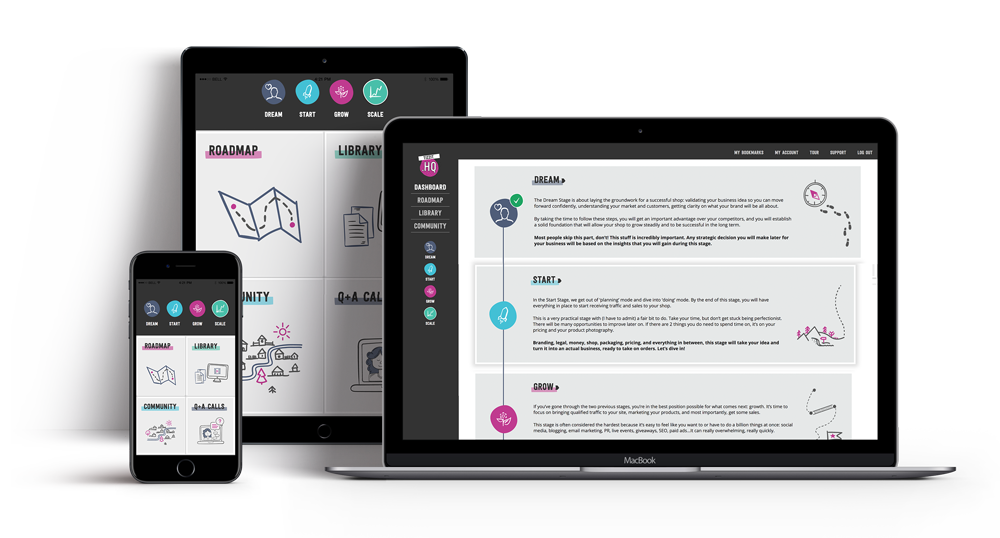
BECOME A TIZZIT HQ MEMBER AND TURN THE HOBBY YOU LOVE INTO INCOME YOU’LL ADORE
Thanks for reading, and until next time, au revoir!
you might also like…
related articles

If you want to be found in search results on Etsy, you need to optimize your product listing for SEO. And if you want to
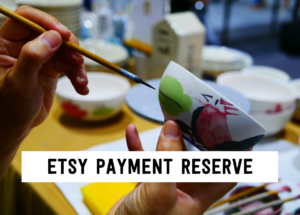
There has been a lot of talk in the Etsy community — and I mean A LOT of talk — about Etsy’s payment account reserve
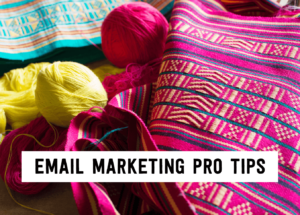
Anyone who knows me knows that I am a HUGE advocate for using email marketing to grow and scale your handmade business. But you may
disclaimer
subscribe to youtube
THE LAUNCHPAD
get in touch
We acknowledge and give thanks to the Budawang and Yuin people, the Traditional Owners of the land we work and live on. We pay our respects to all Aboriginal and Torres Strait Islander Peoples and elders past, present and emerging.
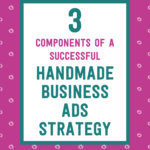
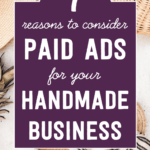

Get Instant Access to
The FULL Resource library